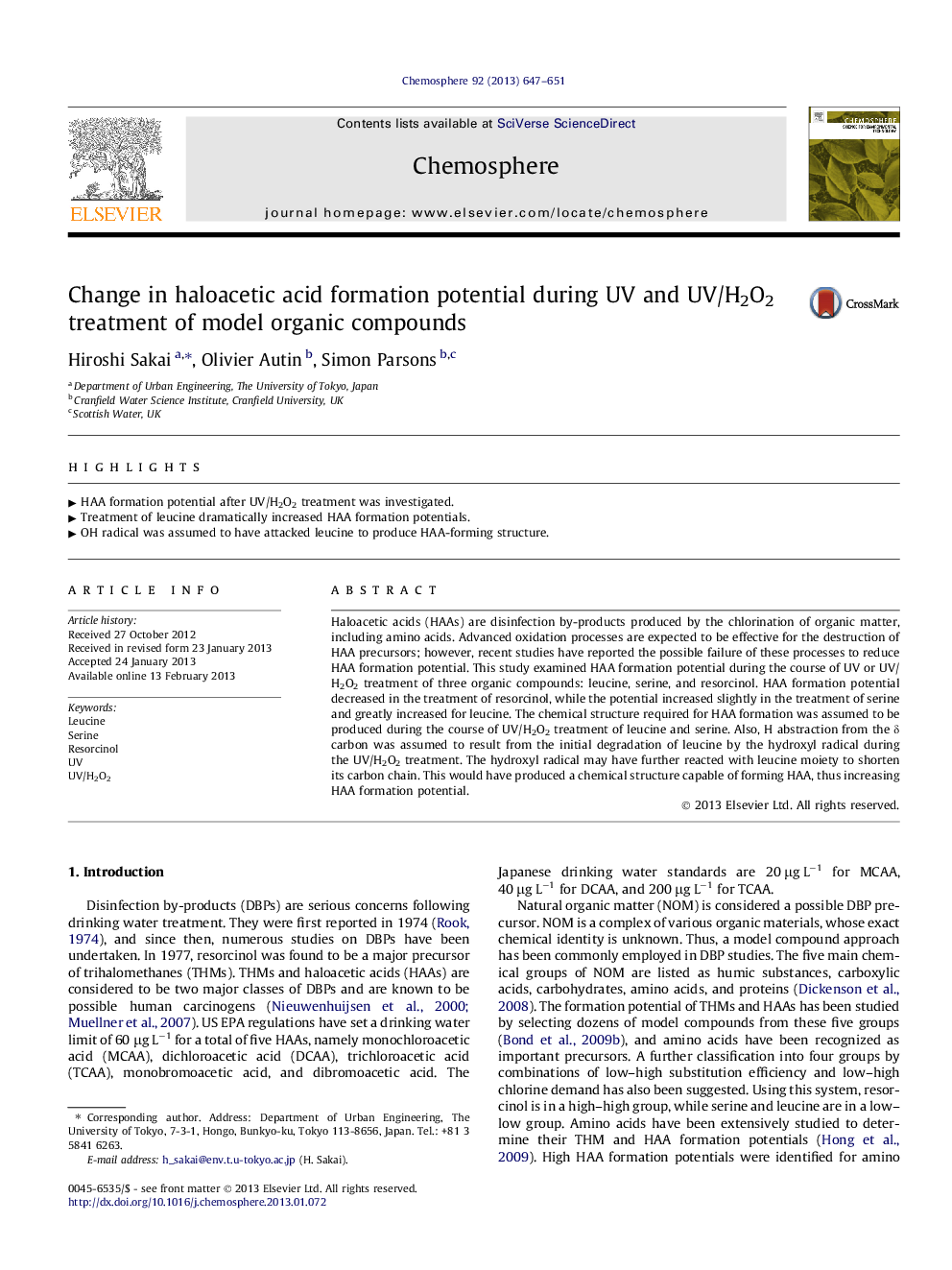| کد مقاله | کد نشریه | سال انتشار | مقاله انگلیسی | نسخه تمام متن |
|---|---|---|---|---|
| 4409070 | 1307462 | 2013 | 5 صفحه PDF | دانلود رایگان |

Haloacetic acids (HAAs) are disinfection by-products produced by the chlorination of organic matter, including amino acids. Advanced oxidation processes are expected to be effective for the destruction of HAA precursors; however, recent studies have reported the possible failure of these processes to reduce HAA formation potential. This study examined HAA formation potential during the course of UV or UV/H2O2 treatment of three organic compounds: leucine, serine, and resorcinol. HAA formation potential decreased in the treatment of resorcinol, while the potential increased slightly in the treatment of serine and greatly increased for leucine. The chemical structure required for HAA formation was assumed to be produced during the course of UV/H2O2 treatment of leucine and serine. Also, H abstraction from the δ carbon was assumed to result from the initial degradation of leucine by the hydroxyl radical during the UV/H2O2 treatment. The hydroxyl radical may have further reacted with leucine moiety to shorten its carbon chain. This would have produced a chemical structure capable of forming HAA, thus increasing HAA formation potential.
► HAA formation potential after UV/H2O2 treatment was investigated.
► Treatment of leucine dramatically increased HAA formation potentials.
► OH radical was assumed to have attacked leucine to produce HAA-forming structure.
Journal: Chemosphere - Volume 92, Issue 6, July 2013, Pages 647–651